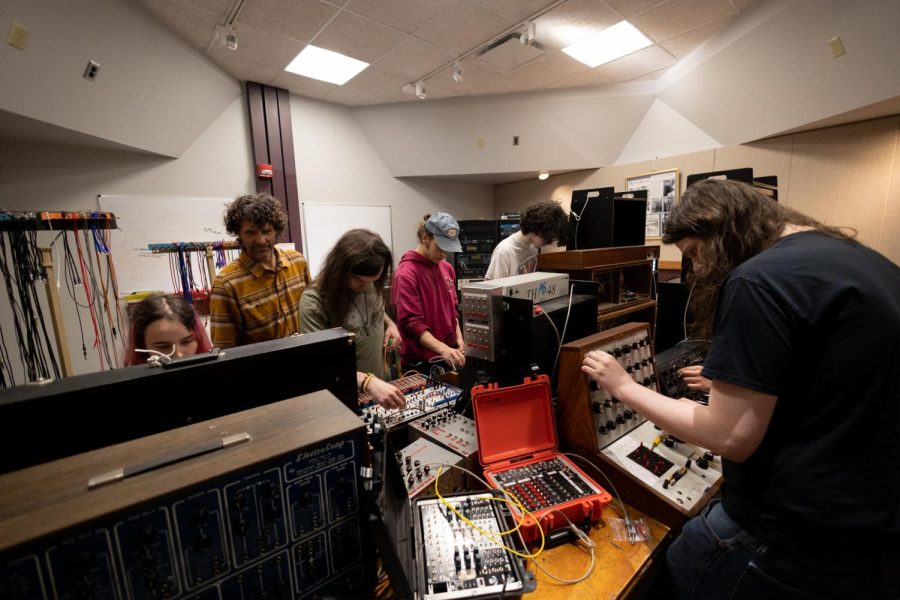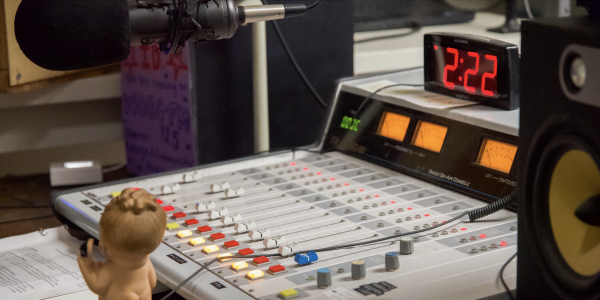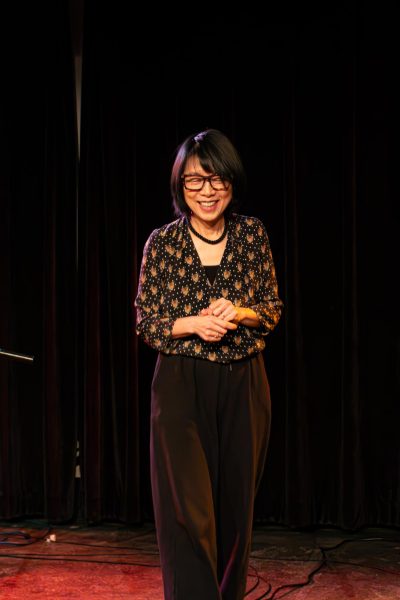Electrophonics Ensemble Showcases Experimental Musicians
On Tuesday, Oct. 25, the Electrophonics ensemble from the TIMARA department hosted their first concert at the Cat in the Cream. Electrophonics is an electronic ensemble that combines visual arts, experimental music, and live performance.
The show consisted of eight stereo fixed audio pieces, which ranged from ambient noise to sample-based hyperpop to synthesized singer song-writer compositions. The works featured in this show were all prerecorded, and the artists went behind the sound booth to manage audio output as their music played at the Cat in the Cream. Two performers, double-degree first-year Oliver Harlan and double-degree third-year Orson Abram, concluded the ensemble performance with their individual audio visual experiences, in which their visual art merged with experimental sound design.
The TIMARA department, a unique staple of Oberlin, draws experimental musicians from all over the world to study under the experience and resources of an established electronic arts program. Students are able to learn and practice with different instruments and music-making technologies.
The artists who shared their work at Electrophonics worked with a wide range of electronic tools, from the synthesizers in TIMARA to softwares like Ableton, Logic, and Bitwig.
Harlan created a sample-based audiovisual experience named “ephemerate” using recordings from NASA’s sample library. The raw audio files recorded by the Perseverance Mars Rover were accompanied by video art Harlan created.
“I used visuals because, if I am making something for a concert to show to people, I just want it to be the most engaging experience possible,” Harlan said. “The content was mostly recorded on my phone. I approach visuals in a way similar to how I sample, edit, and manipulate music, but with footage. I also used the DALL-E AI generator. I uploaded a photo I took and then created AI variations of that, then I took one of those images and made AI variations of that, and kept doing that over and over. It started as an image of a museum in [Los Angeles], and the final image was just a square.”
Sometimes, there is a hierarchical relationship between music and visuals, with one providing support for the other This shifts in different contexts, from film to music video. Musicians may set scores for films, in which the video is highlighted, and some visual artists work in designing music videos, which revolve around the music. However, engaging with experimental sound and visuals might allow for even more collaboration between the mediums.
“By engaging with multiple mediums, you can create something that might not otherwise make sense,” Harlan said. “The audio or the visuals alone might not make sense, but together, as one piece, it does. I was a little worried that the video might take away from the audio, that people would focus more on the visuals. I have done a little bit of film scoring and it is fun, but for that, the music is not the main focus so people don’t really pay attention to it. It’s interesting to do it the other way around, with music as the focus. I think that making visuals to accompany music can enhance it.”
The audience consisted not only of other electronic musicians and experimenters but also of other students who take interest in electronic experimental music.
“I have two friends who had pieces that were played at the show, so I went partially for them and partially because I love everything happening in the TIMARA department,” College first-year Danilo Vujacic said. “I’m really interested in the music that they perform and curious to explore the classes in the department soon. I like noise music, I find it fascinating, and being at a place like Oberlin, there are a lot of great opportunities and people to meet who are interested in that sort of stuff.”
To members of the audience, the multidisciplinary experimentation was effective in connecting with the soundscapes.
“There is definitely an interesting relationship between experimental noise music and its translation into film,” Vujacic said. “We saw that with some of the pieces at the concert. The visuals enhance the experience and elevate the atmosphere that music creates. I think that interplay is interesting and valuable. It adds another dimension to the music.”
Other audience members included visual artists, some of whom had not encountered electronic music before coming to Oberlin.
“I think it’s so cool to have art being made in a place where there are so many different people doing so many different things, because you naturally combine different ideas and mediums,” College first-year and visual artist Frances McFetridge said. “This performance was a good example of that — of technology and art and visuals and music coming together. It felt like a broadening of the artistic mind into other mediums that make it more interesting and nuanced.”
Presentations like the Electrophonics concert allow TIMARA students, electronic musicians, and visual artists to connect with a diverse audience to connect through technology and multidisciplinary arts.











